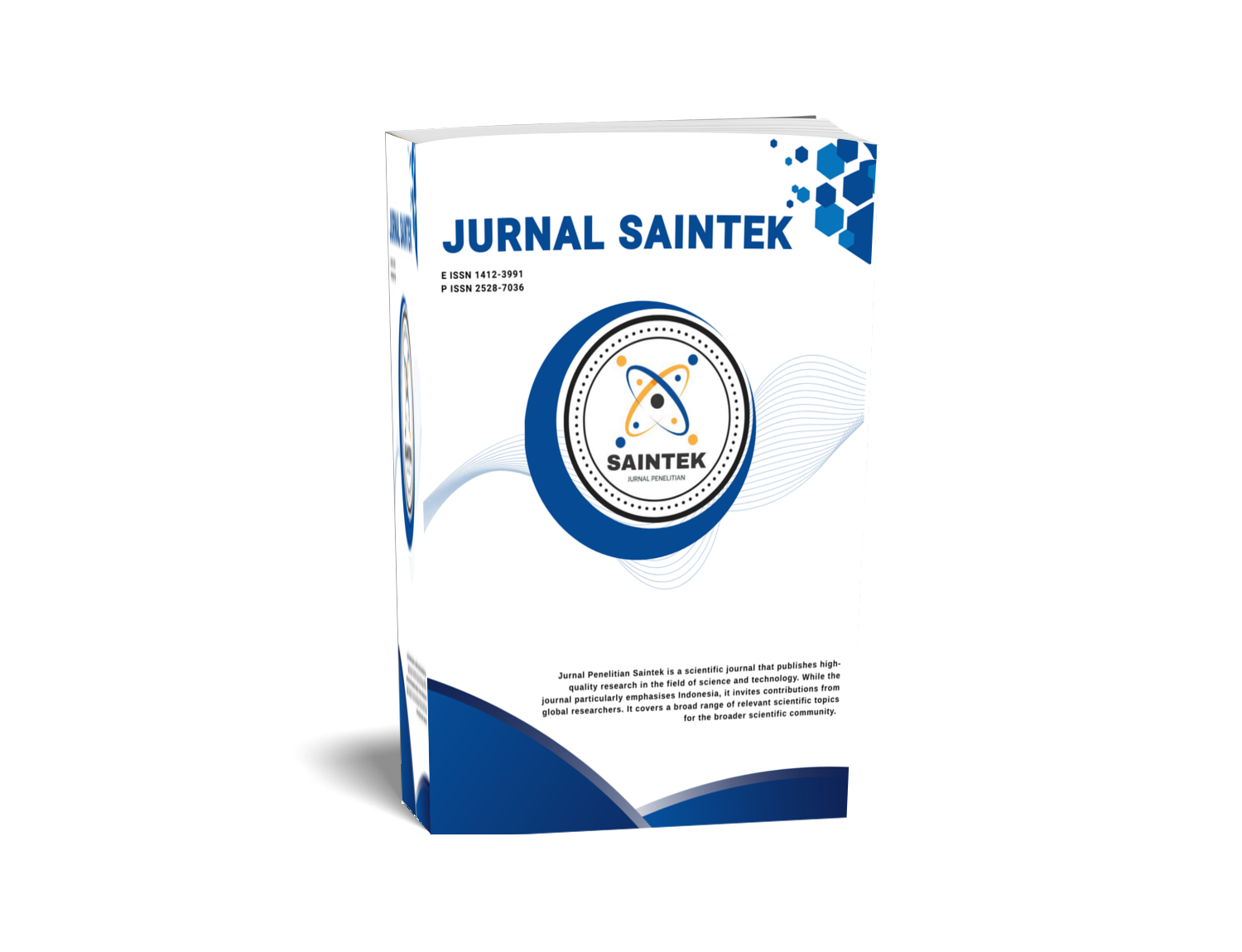MECHANICAL PROPERTIES OF CELLULOSE BACTERIA FROM COCONUT WATER WITH ADDITION OF THE CHITOSAN
DOI:
https://doi.org/10.21831/jps.v19i2.3498Keywords:
Chitosan, Bacterial Cellulose, Bacterial Cellulose-Chitosan, and Mechanical PropertiesAbstract
The objective of this research were to identify the chitosan concentration that produced bacterial cellulose-chitosan with optimum mechanical properties and to identtify the effect of chitosan addition for function group, cross section morphology, and crystallinity of bacterial cellulose based coconut water. Bacterial cellulose-chitosan has been succesfully prepared by immersing dry bacterial cellulose in chitosan solution 0.5; 1.0; 1.5; 2.0; 2.5; and 3.0% (m/v) for 6 hours. The films were characterized using tensile tester to identify mechanical properties, XRD (X-Ray Diffraction) to identify crystallinity, FTIR (Fourier Transform Infrared) to identify functional group, and SEM (Scanning Electron Microscope) to identify cross section morphology. The bacterial cellulose-chitosan 0.5% had the most optimum mechanical properties. The addition of chitosan could decrease elongation at break, and also increase strenght at break and modulus Young of bacterial cellulose. The crystalinity decreased with the addition of chitosan 0.5% from 30.43% to 15.38%. On the other hand, the FTIR spectrum showed that there was interaction between bacterial cellulose and chitosan molecule. SEM images show that bacterial cellulose consisted of tight fibrin thread, so it could form layers. Bacterial cellulose-chitosan 0.5% consisted of multilayered of bacterial cellulose and chitosan layers.
References
Aleksandra, R.B., Anna, P.W., Bogumila, P., Alojzy, R., and Lukasz, L. 2005. Antibacterial and antifungal activity of chitosan. Isah vol.2. 406-408.
Barud, H.S., Ribeiro, C.A., Crespi, M.S., Martines, M.A.U., J. Dexpert-Ghy, Marques, R.F.C., Messaddel, Y. and Ribero, S.J.L. 2007. Thermal characterization of selulosa bakteriphosphate composite membrane. Journal of Thermal Analysis and Calorimetry, Vol 87 (3), 815-818.
Ciechańska, D. 2004. Multifunctional bacterial cellulose/chitosan composite material for medical applications. Journal of Fibres & Textiles in Eastern Europe. Vol. 12. No. 4.48 Czaja, W.K., Young, D.J., Kawecki, M., and Brown, R. M. 2007. Reviews: The future prospects of microbial cellulose in biomedical applications. Biomacromolecules, Volume 8, No. 1., 1-12.
Darmansyah. 2010. Evaluasi sifat fisik dan sifat mekanik material komposit serat/ resin berbahan dasar serat nata de coco dengan penambahan nanofiller. Tesis. Program Magister Teknik Kimia Universitas Indonesia.
Hoenich, N. 2006. Cellulose for medical applications: Past, present, and future. BioRes. 1 (2).270-280.
Jaehwan, K., Zhijiang, C., Hyun, L.S., Gwang, C.S., Don, L.H., and Chulhee, J. 2010. Preparation and characterization of a bacterial cellulose/chitosan composite for potential biomedical application. J Polym Res 18:739-744.
Lindu, M., Puspitasari, T., dan Ismi, E. 2010. Sintesis dan karakterisasi selulosa asetat dari nata de coco sebagai bahan baku membran ultrafiltrasi. Jurnal Sains Materi Indonesia Vol. 12, No. 1 hal: 17- 23.
Pradip, D.K., Joydeep, D., and Tripathi, S.V. 2004. Chitin and chitosan; chemistry, properties and applications. Journal of Scientific and Industrial Research. Vol 63. 20-31.
Rohaeti, E, dan Rahayu, T. 2012. Sifat mekanik bacterial cellulose dengan media air kelapa dan gliserol sebagai material pemlastis. Prosiding Seminar Nasional Penelitian, Pendidikan dan Jurnal Penelitian Saintek, Vol. 19, Nomor 2, Oktober 2014 13 Penerapan MIPA. FMIPA Universitas Negeri Yogyakarta.
Rosidi, B., Budhiono, A., Suryati, A.H., and M. Iguchi.. 2000. Production of selulosa bakteri from fruit waste materials. Proceeding The Second International Workshop on Greeen Polymers. Indonesia: Indonesian Polymer Association.
Takayasu, T. and Fumihiro, F. 1997. Production of bacterial cellulose by agitation culture system. Pure & Appl. Chem. Vol 69, No 11, 2453-2458.
Waspodo, P., Budhiono, A., Suryati, dan Sujono, N. 2000. Proceeding The Second International Workshop on Greeen Polymers. Indonesia:Indonesian Polymer Association.
Wijandi, S. dan Saillah, I. 2003. Memproduksi nata de coco. Jakarta: Direktorat Pendidikan Menengah Kejuruan Direktorat Jenderal Pendidikan Dasar Dan Menengah Departemen Pendidikan Nasional.
Yulianto, A., Kudo, M., dan Masuko, T. 2000. The morphology and physical properties of selulosa bakteri gel. Proceeding The Second International Workshop on Greeen Polymers. Indonesia: Indonesian Polymer Association.
Downloads
Published
How to Cite
Issue
Section
Citation Check
License
Who Can Submit?
Any individual may submit an original manuscript for consideration for publication in Jurnal Penelitian Saintek as long as they hold the copyright to the work or are authorized by the copyright owner(s) to submit it. Authors retain initial ownership of the copyrights to their works prior to publication, except in cases where, as a condition of employment, they have agreed to transfer copyright to their employer.
User Rights
Jurnal Penelitian Saintek is an Open Access journal. Users are granted the right to read, download, copy, distribute, print, search, or link to the full texts of articles, provided they comply with the conditions of the Creative Commons Attribution-ShareAlike License 4.0 (CC BY-SA 4.0).
https://creativecommons.org/licenses/by-sa/4.0/
Author Rights
Authors retains copyrights.
Jurnal Penelitian Saintek by http://journal.uny.ac.id/index.php/saintek is licensed under a Creative Commons Attribution-ShareAlike 4.0 International License.









